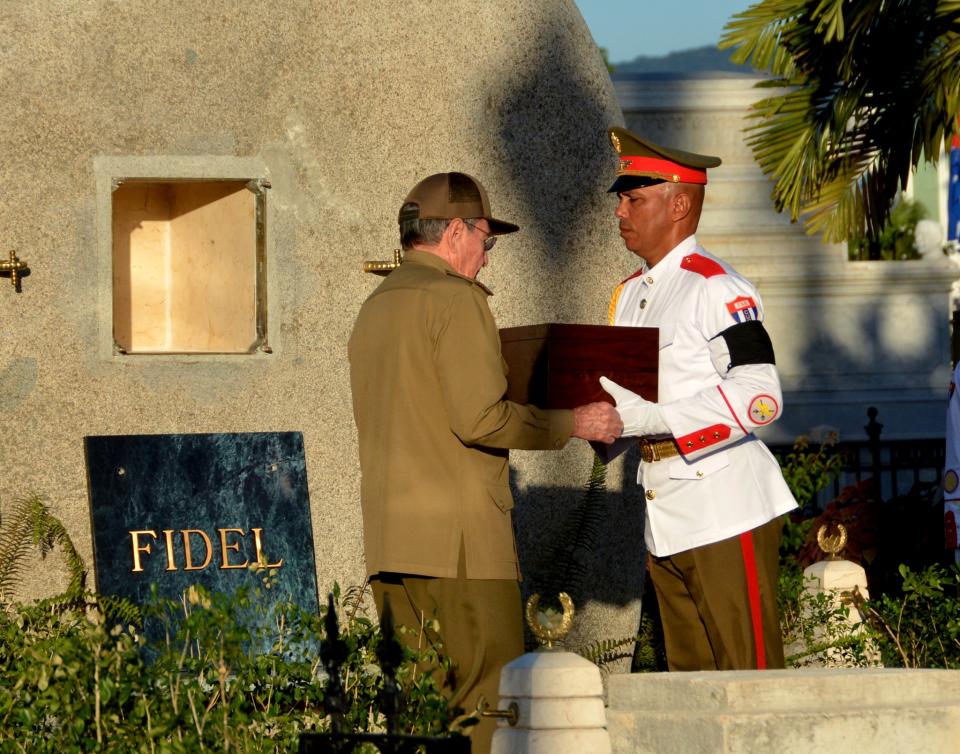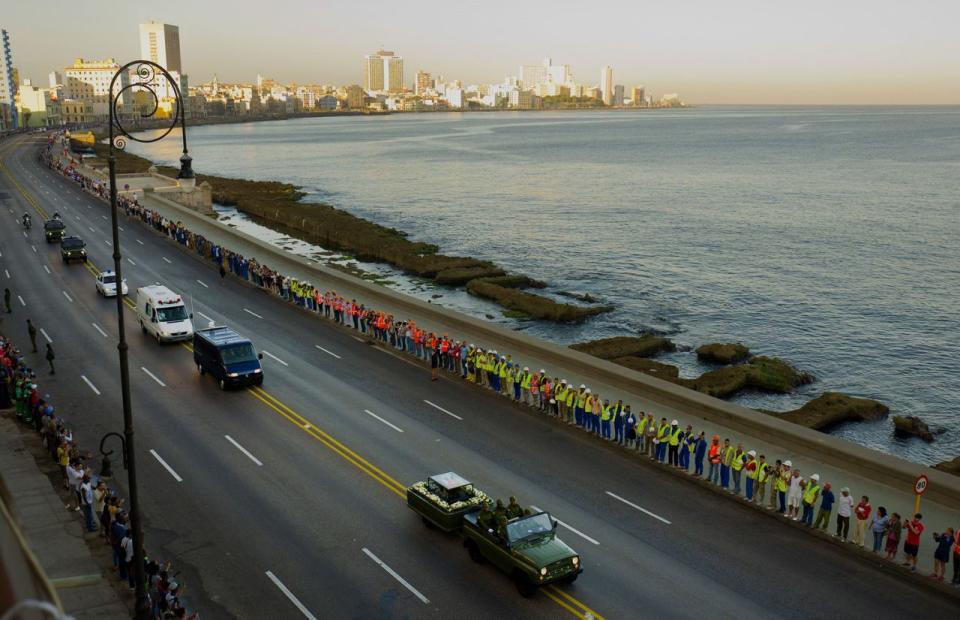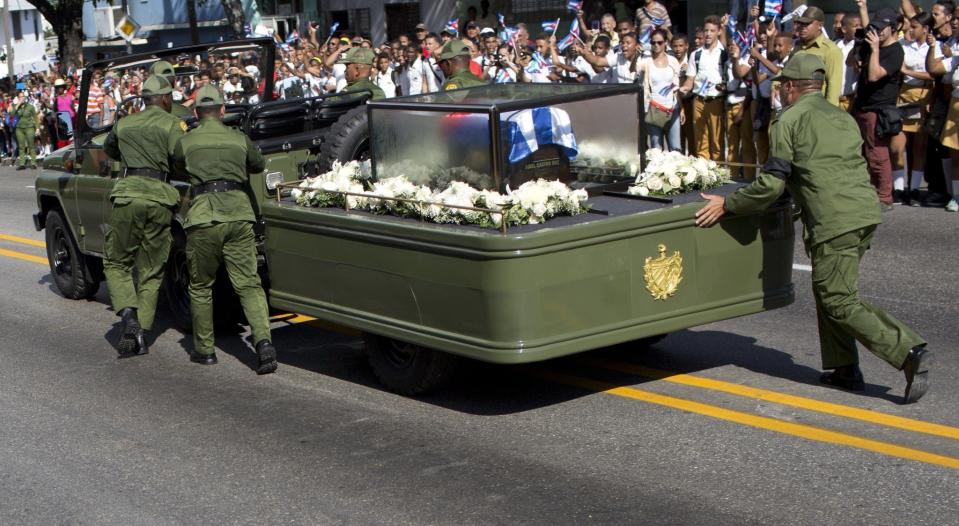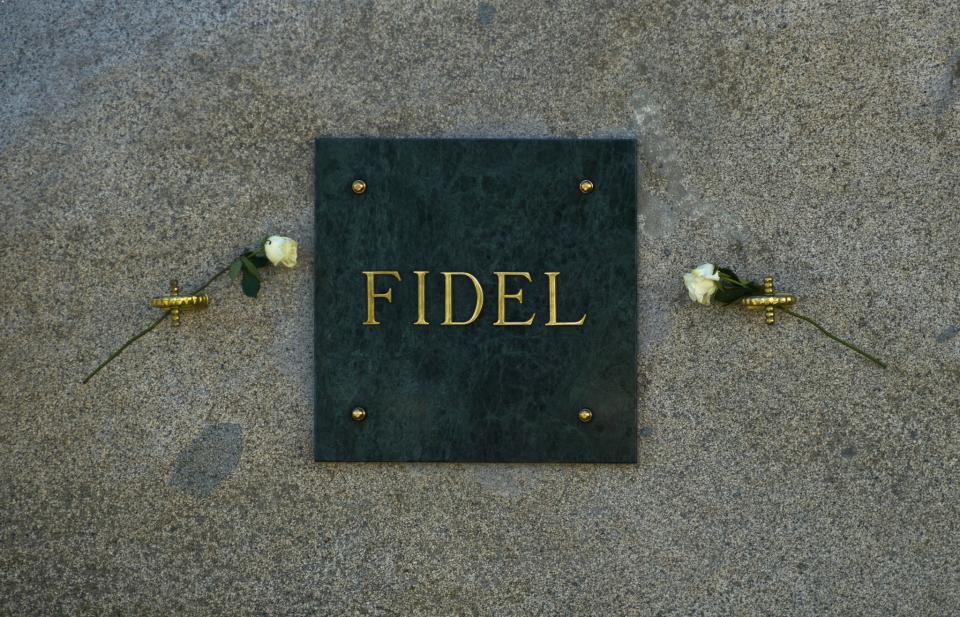Fidel Castro’s quiet end
Fidel Castro is dead. This should not be news to anyone, but many people had their doubts. Castro was believed dead in 1953, after he disappeared during his surprise attack on the Moncada Barracks during an early, failed attempt to overthrow Cuba’s government. He was declared dead in 1956 when his second attempt, an invasion force, was shot up and dispersed by the Cuban military. In 1957, army commanders claimed to have killed him, and he survived a famously broad array of assassination attempts in the 1960s, and false alarms as recently as 2006, when an attack of diverticulitis led to rumors that his death was being kept secret. The anticipation of his end grew so routine that the Sun Sentinel of Florida once ran with the disarming headline, “NOT DEAD YET.”

This time, he is “in the ground.” I have seen it with my own eyes.
Castro’s death, at age 90, was so long anticipated that it achieved a rare distinction for the man who dominated Latin America and grandstanded on the global stage for decades: It was anticlimactic. Having passed away quietly on Nov. 26, Castro was mourned by supporters and jeered by enemies who took to the streets of Miami’s Little Havana to dance and celebrate. This week, a nine-day period of official mourning ended with the ritualistic transfer of his cremated remains to a grave in eastern Cuba beside that of José Martí, the independence leader who is Cuba’s only figure of comparable stature.
Castro’s final journey began with a public ceremony in Havana (at which his ashes were not present), and then continued for three days in an emotional and at times exhausting display of both official propaganda and personal closure. The caravan of his remains was designed to evoke and repeat in reverse the triumphant march to power by Fidel in January 1959, when his bearded guerrillas overthrew a dictatorship and put Cuba into a new and ultimately remote orbit. The man who inspired imitators across the globe went home in a glass box, cheered by Cubans lining the roadways, but finally smaller than life.

On Friday and Saturday, I followed the route of Fidel’s cortège, from Havana eastward through towns that had been critical battlegrounds in his revolution — Santa Clara, Sancti Spiritus, Las Tunas and Bayamó, where, amid goose-stepping rituals, the remains rested overnight. I arrived in Bayamó long after dark, the crowds gone. Stores were empty of food (once an agricultural power, Cuba now imports 70 percent of its calories) and horse carts clopped in the quiet streets, the country’s transportation and commercial infrastructure long defeated by central planning and Castro’s own micromanagement. By day, tributes from well-educated children; by night, evidence of all that Cuba lost in his 57 years in power.
The funeral was to be held in Santiago de Cuba on Saturday night, but just before reaching the island’s second city early that morning, my bus (a special hard-currency service available almost exclusively to foreigners) began to stutter and then broke down on Cuba’s principal highway. We waited for an hour in the morning sun before a relief bus scooped us up and completed the journey down into Santiago, located in a superheated bowl of mountains. Curiously, in 1958, Castro and his guerrillas were never able to capture this city, effectively their hometown, but he always favored the rural and remote over Havana, and Santiago, poor and largely black, had become the most enthusiastic of revolutionary cities, the “heroic Santiago,” as Raul Castro called it. Mourners turned out in large numbers for the midday parade of his brother’s remains, which rolled slowly through the neighborhoods of the city. I waited at noon beside the mustard-yellow walls of the Moncada Barracks, famous as the site of Fidel’s first (and failed) battle against the Batista dictatorship of the 1950s.
The mood was less of mourning than of defensive assertion. Thousands of people lined an avenue, but that wasn’t particularly many for such a long stretch — one side of the street was taken up only by a single rank of schoolgirls practicing their chants (“The people, triumphant, will never be defeated” or “I am Fidel”) but my side had a crowd no more than a few people thick, far less than the dense crowds I had witnessed during the similar parade of Che Guevara’s remains at his 1967 funeral.
At last, a Russian helicopter heralded the arrival of the cortège, which glided steadily along the avenue, first two motorcycle police, then a press truck, and finally a pair of military jeeps, the second towing the curiously flimsy trailer in army green which held, inside a glass display case, the small box containing the ashes of the man who dominated Cuba in the 20th century.

All too symbolically, after the parade had passed, the jeep towing Fidel’s stalled and coasted to a halt. Eight Cuban soldiers in red berets jumped out of their following vehicle, secured the street for a moment, and then, realizing what the problem was, leaned against the trailer and its jeep, jump-starting the funeral procession once again. The situation couldn’t have been more appropriate: flawed, but with the failures made up by the effort of Cubans themselves.
Castro’s final sendoff was held in a field in Santiago on Saturday night, blessed by a cool breeze but oddly quiet and surprisingly uncrowded for a leader to whom the words “maximum” and “supreme” were routinely applied. Even the VIP ranks on the dais had attracted very few global figures. Putin skipped the event, and so did Theresa May and every leader in Western Europe except the prime minister of Greece. Despite a fawning condolence letter, Justin Trudeau of Canada stayed home, and the ranks were made up with representatives of China and several African nations, along with a murderer’s row of Latin American leftists — Daniel Ortega, Evo Morales, Luiz Inacio Lula da Silva and Dilma Rousseff of Brazil, and, in a place of honor next to Raul Castro, Nicholas Maduro of Venezuela. President Barack Obama, engaging in a bit of diplomatic legerdemain, declined to send a delegation, instead dispatching his trusted aide, Deputy National Security Adviser Ben Rhodes.
The crowd was large enough, but not impressively so, and I was easily able to push myself almost to the very front, unlike at the Rolling Stones concert I had attended in Havana in March. Like the Stones show, however, this was an overwhelmingly young crowd, and salted with foreigners who often turned out to be tourists stopping by on a lark. At Santiago’s memorial event, I found a young Moroccan dressed in a white sheet — a makeshift North African djellaba — who was carrying the flag of the Polisario Front, one of many Third World liberation groups defended and promoted by Castro during the years when he could afford to meddle in African and Asian affairs. A Chilean named Christian had made a last-minute pilgrimage to Cuba for the funeral, and told me he was grateful for Castro’s opposition to dictators like Augusto Pinochet. He fell humbly silent when I asked him how a right-wing dictator was different from a self-professed dictator of the left. A young Venezuelan named Jeizy, a student in Cuba, told me that he disliked Hugo Chavez from the left, calling the late Venezuelan socialist and close ally of Castro “a capitalist” because he still allowed corporations to exist in that country. He admired Cuba’s total elimination of all businesses.
Most of the Cubans at the Saturday night rally were less dogmatic than nationalistic, cheering Fidel Castro as the embodiment of Cuban power and standing in the world. There was little shouting and much quiet waving of the small Cuban flags that had been handed out to mourners. Yet all through the crowd were reminders of how badly Cuba had lost what was once a culture war, with young people dressed in the same brand-name clothing knockoffs as their peers around the world, overwhelmingly those that alluded to American places and aspirations (Hollister, Abercrombie, Oakland Raiders). Even as Raul Castro denounced “racist imperialism” from the stage, a quick glance showed American flags on T-shirts, fanny packs, shorts and Spandex tights. In the first years of the 1960s, the revolution had a puritanical streak, banning Americana along with long hair and Beatles music. Now the Rolling Stones could not only play in Cuba, but draw a crowd I would estimate at more than 10 times the size of this funeral rally for Fidel. One hundred thousand Cubans are fleeing the country each year now, often in perilous journeys on foot through Central America or via the maze of smugglers and kidnapping gangs on the Mexican frontier. The revolution’s vaunted — and genuine — success in education has become a benefit to other countries even more than to Cuba, the brain drain another statement about how the young and the hopeless view their late leader.

The speeches were surprisingly trim, with a quick succession or remarks from figures leading the dominant institutions of Cuban life — among them the worker’s union, which ensures there are no actual unions, the student association that prevents students from asking questions, and Miguel Barnet of the writers and artists union, in charge of ensuring there is only writing and art acceptable to the government. Raul Castro spoke last, with a hoarse, hesitant voice, at times struggling to find the words on his script. He attacked the United States and capitalism, and championed Cuba’s standing as a “medical power” and a center of tourism. He lauded Cuba’s laudable record on infant mortality, but with the crowd-killing rhythm of a man lost in details (after one long pause, he said “end of quote.”). His broken voice sounded authentically grieving, however, and he finished by pointing to the giant statue of independence hero Antonio Maceo that loomed over the grounds, promising to keep up the battle. His final words were “Hasta la victoria,” met by the crowd with a familiar, final roar: “Siempre!” That was Che Guevara’s slogan, but as the crowd broke up, I could not help compare it to the much larger and more intense crowd that awaited Che’s remains in Santa Clara, Cuba, almost 50 years ago. At 8:21 p.m., the event was over.
A man in the dispersing multitude told me his name was Alfredo Vazquez Páez, and that he was 79. “I was in Havana in ’59,” he said, “and now I’m here.” He’d seen Fidel speak back then, at the old army camp renamed Ciudad de Libertad. Asked what he remembered about Fidel, he recalled the maximum leader’s prowess at baseball, and how “everyone cheered. I was 19 then. Now I’m here.”
Memory is tricky. Páez would have actually been 22 at the time, but he walked off, preferring memory to math. The greatest funeral in the history of Latin America ended with a whimper.
The weaknesses of the Cuban Revolution have been visible for decades — by 1960, John Kennedy noted, promises of elections, freedom and progress had all been abandoned — but memory will supplant such facts. Cubans are the first victims of this, their monopoly press purged of dissenting voices so that Cuban are the last to know of problems, errors and vanities in their own national leadership. Even the Cuban officials filling the second row of mourners at the Saturday rally were largely unknown — faceless or voiceless servants of power. But almost alone in the world, Cuban media presented not a word or whisper of criticism, and no mention of Mr. Castro’s mixed record. State television was a continuous loop of acclaim and adulatory voices, interrupted only by sounds extolling Mr. Castro as the eternal leader of the revolution. The actual interment, a closed ceremony the next morning at Santiago’s Santa Ifigenia Cemetery, was visible only in the remote distance as howitzers banged out a salute. No matter how they display, commemorate, bury or parade his body, the maximum leader is really dead, and will live forever. Take him for all in all, as Hamlet says, we shall not look upon his like again.

_____
Patrick Symmes is a journalist and the author of The Boys from Dolores: Fidel Castro’s Schoolmates from Revolution to Exile.
___________________
Related Slideshows:
Reaction to the death of Fidel Castro >>>


